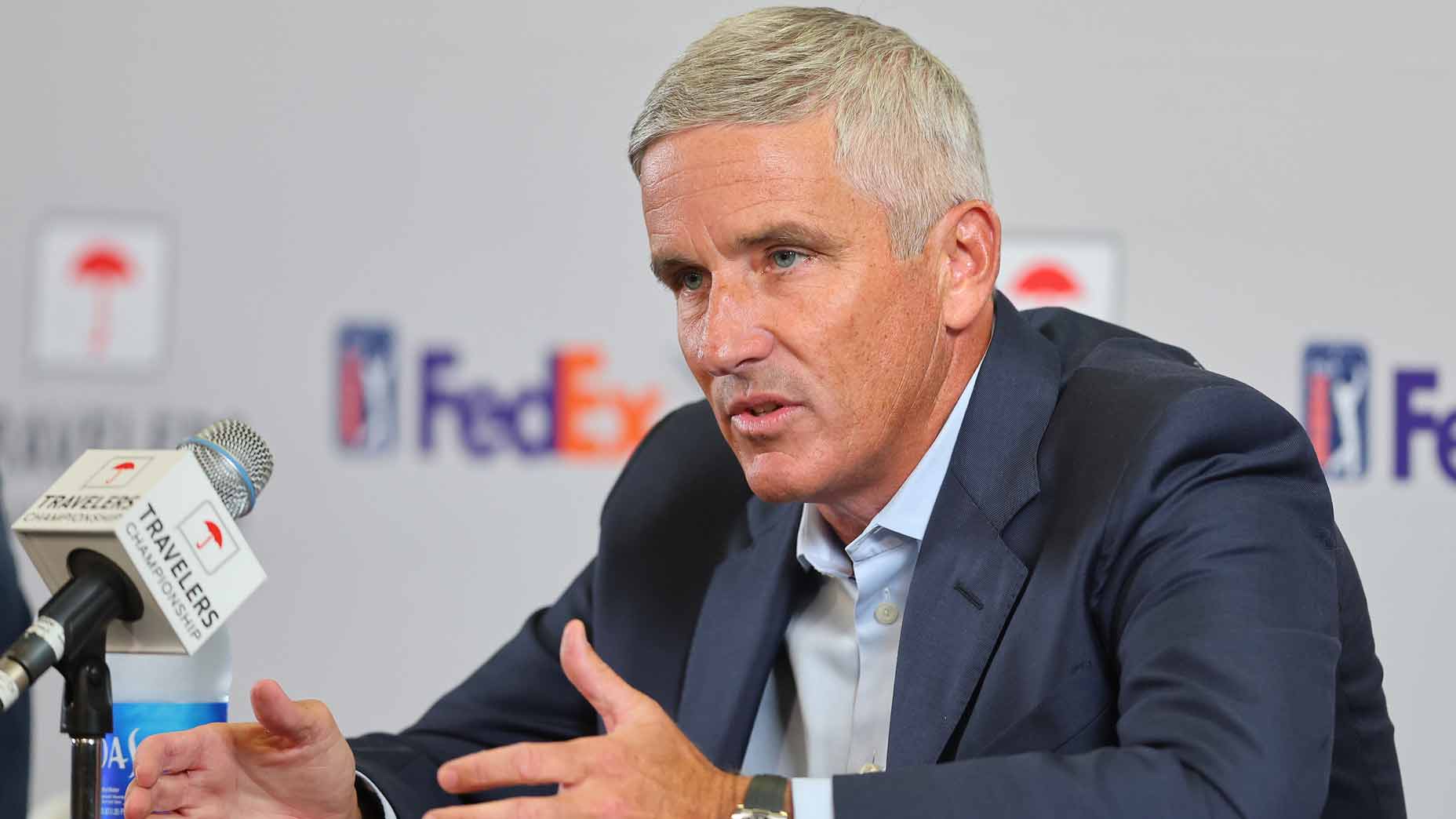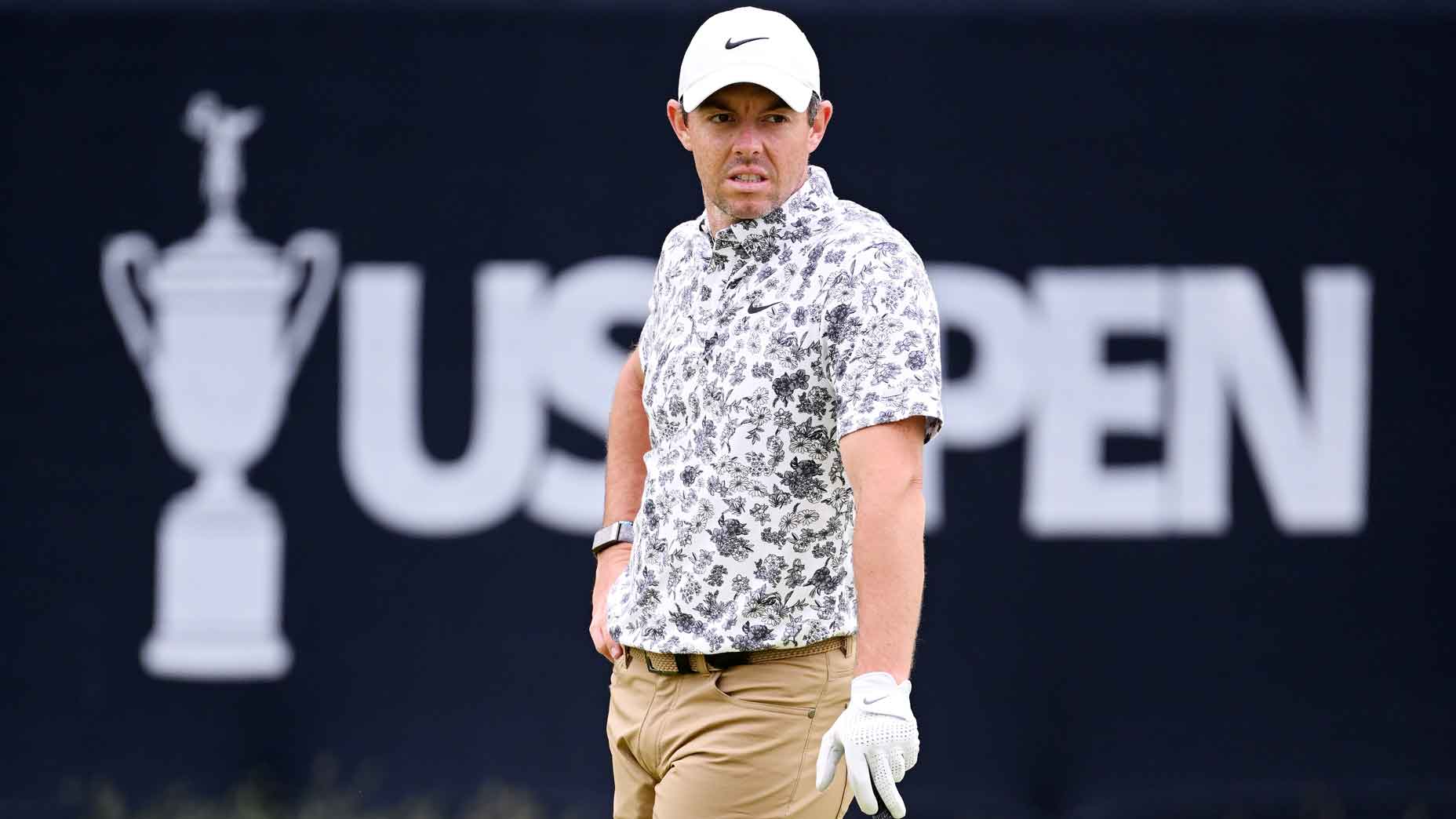The PGA Tour is punching back.
That was the message Jay Monahan delivered to his membership in a closed-door meeting on Tuesday, and it’s the message he delivered to the public in a press conference on Wednesday. He announced the Tour’s plans to add money and significance to its flagship events, effectively creating a super-schedule for top pros.
Monahan insisted this plan was already in the works but acknowledged that the moves were “obviously accelerated by the current environment.” As he began his remarks, LIV Golf sent out a release: They’d officially signed Brooks Koepka. It’s on.
So what does the new schedule look like — and what does it mean for PGA Tour players? Let’s run through it.
The Money
We may as well start there, right? This has been about dollar signs at almost every turn. The Saudi-backed LIV breakaway league has access to the Public Investment Fund, which is effectively a bottomless pit of cash. They’ve handed over the better part of a billion dollars in promises to PGA Tour defectors. But the PGA Tour responded with what amounts to a $54 million increase (yes, they went with 54) spread across eight of its biggest events, including upping the Players Championship purse to $25 million and six other events to $20 million.
“I am not naive,” Monahan said Wednesday at the Travelers. “If this is an arms race and if the only weapons here are dollar bills, the PGA Tour can’t compete. The PGA Tour, an American institution, can’t compete with a foreign monarchy that is spending billions of dollars in attempt to buy the game of golf.”
The purse hikes made it clear: The Tour may not be able to compete, but it will do its best to keep up anyway.
The Calendar-Year Schedule
Tired of explaining to your non-golf friends that the PGA Tour sort of starts about two weeks after the previous season ends, but it also sort of ends around Thanksgiving, but only for a month, but not really? Good news for you, pal. The Tour is returning to a calendar-year schedule, with the FedEx Cup running January to August and a supplemental fall series of events.
Next season — the 2022-23 season — will still begin this coming fall and run through fall of 2023, but the following season will begin in January 2024, with eligibility for that season determined in the fall of 2023.
The Super Season
I’ve always felt as though the PGA Tour schedule was confusing to casual fans because, like the children of Lake Wobegon, Tour events were all treated as if they were above average. A 47-event FedEx Cup schedule is great, because it allows professional golf fans to watch professional golf, but it’s confusing when the Tour is essentially a nonstop carousel of similar events.
The advantage of the new schedule is that it makes it clear when the very best golfers will be playing. One common gripe among Tour fans is that they don’t always see the best players together in the same field. Now we have established events with established histories getting elevated to the next level. The money is part of it; the trickier bit will be for the Tour to make these events feel like they have real juice. Here’s how that “Super Series” (my words, not theirs) will look with new elevated purses:
January: Sentry Tournament of Champions ($15 million, up from $8.2m)
February: Genesis Invitational ($20 million, up from $12m)
March: Arnold Palmer Invitational ($20m, up from $12m), Players Championship ($25m, up from 20m, WGC-Match Play ($20m, up from $12m)
April: Masters
May: PGA Championship
June: Memorial Tournament ($20m, up from $12m), U.S. Open
July: Open Championship
August: Playoff season — FedEx St. Jude Championship ($20m, up from $12m) and BMW Championship ($20m, up from $12m).
We’ll get to the fall series in a moment, but that’s a pretty compelling schedule of 11 events that should feature nearly every top Tour member.
Rory McIlroy on Brooks Koepka, LIV defectors: ‘They say one thing and then they do another’By: Josh Berhow
The Playoffs
Fewer players will be eligible for the FedEx Cup Playoffs. Instead of 125 pros locking up their Tour cards (and an additional FedEx Cup payout) at the end of the regular season, just 70 will make the first playoff event, the FedEx St. Jude Championship. The top 50 will move on to the BMW Championship and the top 30 will advance to the Tour Championship.
That top 70 who make the playoffs will be fully exempt for the following season, including invitationals (Riviera, Bay Hill, Memorial) while the top 50 will be eligible for a new fall series. Speaking of which…
The Fall Series
Monahan added that there will be a series of up to three international events that will be played after the conclusion of the FedEx Cup playoffs. These events will be limited-field and no-cut events and their specific format is under review by the Player Advisory Council.
The effect here is threefold: It’s a chance to gather the game’s best players, it’s a chance for top-50 pros to double-dip and increase their earnings for the season and it’s an easy enough commitment that pros can play (or not) and still get an offseason.
What of the “other” Tour pros? Those outside the top 70 at the end of the PGA Tour season will compete in a “compelling, consequential final stretch” that will determine their status for the following season.
Remaining questions
Let’s buzz through ’em, one by one.
Will players get salaries?
No — not yet, at least.
Is there a road back for suspended LIV players?
Not yet. “I think our position there is very well-established as it relates to any players that are going to play in future events,” Monahan said.
Where does the DP World Tour fit in here? What happened to that “strategic alliance?”
The DP World Tour is particularly vulnerable at the moment due to LIV defections and its immediate future plans are in doubt. While we’re expecting an announcement soon from commissioner Keith Pelley, Monahan reiterated that the strategic alliance is strong and that they’re working together “closely” — but it was interesting that no co-sanctioned events were elevated (with the exception of the WGC-Match Play) like the Genesis Scottish Open, for instance.
Will the majors ban LIV players in the future?
Well, last week’s U.S. Open didn’t. Next month’s Open Championship won’t, either. Monahan said on Wednesday that they’ll make their own decisions and that he won’t tip the scales. “We’re just going to be as competitive as we can be,” he said.
Where’s the extra money coming from?
Largely from sponsors, Monahan said — both old and new. He added that funding will be “coming from a combination of sponsor contribution, ways to continue to sell more within those events themselves, and our reserves.”
Asked if LIV’s arrival sped up the announcement, Monahan acknowledged it was a factor.
“Yes, this is something that we’re doing to respond on behalf of our members to the current environment that we’re in,” he said.
Would the PGA Tour ever partner with LIV?
“Hypotheticals,” Monahan said. In other words, not if they can help it.
Now what?
Now we wait for the next LIV event, which tees off next week. And we watch the spigot of defections, seeing if the stream continues or if the PGA Tour’s plans make it slow to a trickle.











